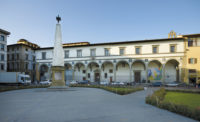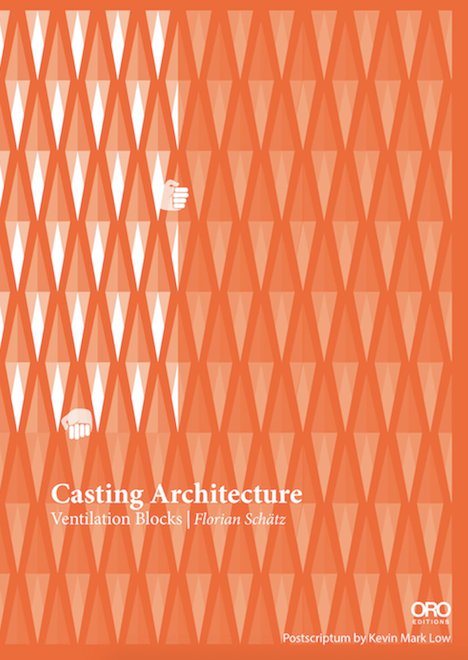Mexico City
The first exhibition space for the Colección Jumex—the private art collection of the company behind the ubiquitous Mexican juice brand—sat in the middle of the company’s manufacturing facility on the northern outskirts of Mexico City. It was a curious location for a museum—not a converted industrial space, as with so many contemporary art venues, but a minimalist insertion into a working, and thus high-security, factory. But the Colección’s new David Chipperfield–designed building, which opened last fall, couldn’t be farther from the slum-surrounded factory setting.
The 43,000-square-foot museum is not small, yet it struggles to compete with the monsters surrounding it. In an effort to maintain a presence on a hemmed-in site, Chipperfield built up, stacking five stories above four levels of subterranean parking. A raised plaza leads into the entry, concealing a bookstore and administrative facilities below, while the levels above contain gallery and event space. Chipperfield also built solid—the heavily reinforced concrete structure is designed to exceed seismic standards in earthquake-prone Mexico City, while a steel frame forms the building’s distinctive sawtooth roofline. The walls, clad in Mexican travertine, do their best to resist the architectural cacophony outside and to evoke something as tough as a castle keep. “When you’re building in a context like this,” says Chipperfield, “you want the buildings to work together, to lean against each other, and to interweave. But you also need to ask, ’How can this particular building assert its place in the city?’ ”
The museum houses what is reputed to be one of the largest private collections of contemporary art in Latin America—overseen by Jumex scion Eugenio López Alonso—but it is open to the public, and one of the ways in which it stakes a claim in the neighborhood is by advertising its accessibility. “The challenge was how to make this building, which is quasi-public, more civic,” says Chipperfield. “What made it easier was the unusual climate of this city.”
Huge pivoting timber doors set in glass walls comprise the building’s main entrance and open the lobby to the outdoors to such an extent that it ceases to feel like a lobby at all. The first floor is really an extension of the plaza on which the building sits. “We wanted to enjoy the climate and play with the notion of the threshold,” says Chipperfield.
The second floor is equally open, effectively a glass box set within the travertine carapace of the elevations. Its broad terraces look out to the city, but the interior is pure Mies. From the richly figured marble to the slender mullions, the Barcelona Pavilion echoes around the space, as it does throughout the project.
On the top floor, the building comes most fully to life. Here, under 30-foot-high ceilings, the museum’s exaggerated roofline lends its character to the interior. UV-filtering skylights on the west-facing pitched side of each ridge bring in daylight, while sheets of translucent plexiglass inside each spike disperse it into the exhibition space as an even glow. The dips in the roof profile dig deep into temporary partitions inside the gallery, so that the character of the ceiling is expressed in the volume of the space. With this move and others, Chipperfield attempted to strike a balance between a building that serves the art and one that has sculptural drama in its own right. “We had the classic museum problem,” says the architect: “we wanted static galleries in which to look at work, but we also wanted spaces that could be more expressive.”
Chipperfield has succeeded in creating a building that addresses both concerns. A black-steel-clad stair connecting each floor deposits visitors in surprising settings—from the lobby to the terraces, each level is distinct from the last—while the culmination in the daylight-filled top-floor gallery is a sheer delight. The architect has made his name with museums, including the celebrated Neues Museum in Berlin and the exquisite St. Louis Art Museum expansion, working within extraordinarily diverse geographical and political contexts. This new neighborhood—unpredictable and over-scaled—is among the least hospitable, yet the Museo Jumex is robust enough to resist it and beautiful enough to keep drawing people in.
People
Owner:
Architect:
Personnel in architect's firm who should receive special credit:
Director
Project architect
Project team
Associate architect(s):
Project team:
Engineer(s):
Services
Electrical
Consultant(s):
Lighting:
Fire protection:
Building management sytem:
Project management:
Graphics:
Quantity surveyor:
General contractor:
Photographer(s): Size: 43,000 square feet Construction cost: withheld Completion date: November 2013 |
Products
Structural system
Exterior cladding
Roofing
Windows
Glazing
Doors
Interior finishes
Furnishings
Lighting
Conveyance |













